Вы здесь
Gorge of Barskoon.
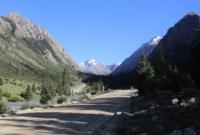
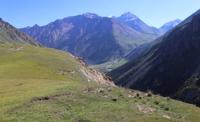
Travel tour to Kyrgyzstan.
“The entrance to the gorge is convenient on both banks, so that there is nothing to cross through the deep ravine of the lower Barskaun; in the gorge itself, the crossings are also convenient. In the lower part of the gorge, and moreover in places where its edges consist of clay, and further of limestone, there are also old glacial moraines with huge blocks of granite, more than three fathoms in diameter; I have never seen such huge ones. In the valley there is only bush; firs higher up, and the first spruce forest below is also on the moraine; above it, under the granite cliffs that form the edges of the valley here, the glacial traces are less clear; avalanches are mixed with the moraines, recognizable, however, by the greater freshness of their stones, but the degrees of this freshness are countless, and the moraines themselves were formed from avalanches on the surface of the glacier, carried by the movement of the ice. From a height of about 6,500 feet. the valley widens, now covered with magnificent meadows; these are the successive Firnmeere of the ancient glacier, as it melted and retreated upwards from the snow line at the end of the Ice Age; the most extensive is at the mouth of the Döngerem. For this river I heard two names from my companions - Döngerem and Karakol.0 and Keregetas in Barskaun."
"Travel through the Turkestan region and exploration of the mountainous country of Tien Shan." N. A. Severtsov. 1873.
Hiking tour in Barskoon gorge.
High-mountain gorge Barskoon ("Barskoon" is same as "barskan". "Barskan" is a blacksmith's hammer or mace, it is possible that name is associated with settlement of same name in gorge where fortress was located), located at an altitude of 1810 to 3754 meters, is located on northern slopes of Terskey Ala-Too ridge, between gorges of Chon-Dzhargylchak in east and Tamgy in west in Jety-Oguz district of Issyk-Kul region.
The gorge crosses the northern slope of the ridge in the direction from north to south, changing direction to the west at the headwaters, where the Kerege-Tash River basin is located. It extends along the axial line of the Terskey Ala-Too ridge to a narrow lakeside plain on the southern shore of Lake Issyk-Kul, with a length of about 57 kilometers.
The height of the slopes above the bottom of the gorge varies from 300 - 500 meters in the foothills to 1000 - 1200 meters. The slopes of the gorge are steep (with a slope of more than 45 degrees), often vertical. In the upper reaches of the gorge, modern glaciation prevails, with glacial valleys and cirque formations.
The bottom of the gorge is narrow, 100 - 150 meters wide, in places widening to 300 - 400 meters, cut by the Barskoon River with its tributaries. The lower part of the gorge with hanging glaciers and snow icing is formed within the foothills of tertiary, mainly Neogene, conglomerates and loams of anthropogenic origin.
A river of the same name flows through the gorge, 62 kilometers long, the catchment area is 352 square kilometers. The Barskoon River has over 40 tributaries, the largest of which are the rivers Dyungyurёmё, Sharkyrak, At-Dzhailoo, Dzhany-Korgon, Kerege-Tash, etc.
The main source of nutrition is melted snow and glacial waters. The Barskoon Gorge is used as a pasture and serves as an important route along which the road to the Upper Naryn Valley passes, to the Kumtor mine, through the Karasai outpost and to the village of Uch-Koshkon.
Forest protection and restoration work is also carried out in the gorge. One of the natural attractions is the Barskoon waterfall. The gorge of the same name begins immediately behind the last houses in the southern part of the village of Barskoon.
The village of Barskoon is located 75 kilometers southeast of the town of Karakol and 260 kilometers southeast of the city of Bishkek. From the A-363 Karakol - Balykchy highway to the middle part of the gorge 21 kilometers here in the summer, in the tourist season there is a car park, seasonal cafes, barbecue houses, from here you can take a walk to the cascade of waterfalls, which are located in the bed of an unnamed river.
The very first waterfall is "Tears of the Barsa" in the Barskoon gorge, a walk to it takes up to 30 - 35 minutes of leisurely walking. The waterfall is located at an altitude of 2470 meters above sea level. The width of the waterfall is about two meters, the height is up to 20 meters, in the lower part the waterfall consists of several cascades.
From the waterfall "Tears of the Barsa" you can walk along the slope to the northeast to the waterfall "Splashes of Champagne". This waterfall is the middle one between the cascade of waterfalls on an unnamed stream on the left side of the Barskoon gorge, located at an altitude of 2500 meters above sea level.
The width of the waterfall reaches about two meters, the height of the water falling from a steep ledge is up to 15 meters. The uppermost and farthest waterfall - "Manas Bowl" in the Barskoon gorge is located at an altitude of 2700 meters above sea level.
The left side of the gorge, in which the waterfall is located - steep, the right side of the gorge is more gentle. The waterfall consists of two cascades, the upper cascade reaches a height of up to 20 meters, the lower cascade, breaking on the rocks in the riverbed, falls from two ledges with a height of 1 to 1.5 meters.
The "Wide" waterfall is located in the western part of the three previous waterfalls. The length of the walk to the waterfalls will be from 4 to 5 hours. The "Rocky" waterfall is located in a narrow, vertical gorge on the right side of the Barskoon valley. The waterfall is perfectly visible from the road that leads to the first pass Sary-Moinok at an altitude of 3442 meters above sea level.
The complex of objects of the natural monument in the Barskoon gorge includes a large stone block located in a forest clearing, not far from the waterfalls, on which there is a bas-relief of the first cosmonaut Yuri Gagarin. Not far from the stone, a bust of the first cosmonaut with the inscription "Yu.A. Gagarin, the first cosmonaut in the world" is installed on a stele.
The initiator and executor of the work on the creation of the bas-relief of Y. Gagarin on the western part of the stone was a former military man who worked as a designer at the Tamga sanatorium - Valentin Dmitrievich Barskov. 200 meters above the monument to Yuri Gagarin, there is a huge stone surrounded by a small metal fence - "Tagai Biy", according to historical sources, in the vicinity of the gorge in the XVIth century there was the headquarters of Tagai-biy (Muhammad Kyrgyz), one of the founders of the Kyrgyz statehood.
In 2011, through the efforts of the local community, a metal fence and a plaque "Tagai Biy Babazdyn. Yyyk Tashi. 1469 - 1533" were installed around the stone. In the lower part of the gorge, in the floodplain of the Barskoon River, mainly along its left bank, are the Barskoon rock carvings.
They are found in the area from the shore of the lake to the entrance to the gorge. On the stones and rocks are carved images of wild animals: goats, deer, horses, camels, hunting scenes and others. Goat figures predominate. Most of the images are given in the best traditions of the Scythian-Siberian animal style.
The drawings were left by the Saka tribes who lived in the Barskoon Valley in the VIIth - IIIrd centuries BC. The petroglyphs were discovered in 1959 by D. F. Vinnik. In the gorge there is a settlement of the same name located at an altitude of 1961 meters above sea level, located 158 meters from the right bank of the Barskoon River, 5.3 kilometers south of the village of the same name.
The Barskoon settlement consists of the central ruins (citadel and shakhristan) and the territory surrounded by a long wall. The total area of the settlement is 3970.86 square meters, the perimeter reaches 252.3 meters. The settlement is square in plan, the length of the northern and southern walls is 61 meters, the western and eastern - 63 meters.
Identified with the town of Barskan, mentioned in written sources of the IXth - XIIIth centuries. The settlement was discovered by D. F. Vinnik in 1959. In the vicinity of the gorge was the medieval city of Barskan (Barsgan, Barskhai), with the same name fiefdom on the southeastern coast of Issyk-Kul (VIIIth - XIIIth centuries).
he semi-nomadic population of Barskan by the XIth century was distinguished by a special dialect among the Karakhanid Turks. The city was famous for its key position on the northern branch of the Great Silk Road and is recorded in Muslim sources of the IXth - XIIIth centuries as "Barskhan", "Upper Barskhan" (in some Arabic sources it was read as "Nushjan"), "Upper Nushjan".
In 1968, local schoolchildren found the Barskoon treasure in a burial mound, southeast of the village of Barskoon (the southern shore of Lake Issyk-Kul), which contained about 120 copper stamped plaques of 12 types, scraps of sheet metal, bowls, etc.
The plaques depict zoomorphic images and various forms of geometric and plant ornaments (including the "tree of life" theme). In 1998, an accident occurred in the Barskoon Gorge: a Kumtor Operating Company truck overturned and as a result, 1,740 kilograms of cyanide fell into the Barskoon River. Local residents suffered and there were casualties.
1.3 kilometers to the north, on the right side of the road and 244 meters from the right bank of the Barskoon River, there is a monument to the “Kamaz-55111” on a solid pedestal. These vehicles took part in the construction of the road through the Barskoon Gorge.
The road that connects the southern coast of Lake Issyk-Kul with the Kumtor mine, which is located in the western part of the Ak-Shyirak ridge, the Karasai border post, the sources of the Naryn River, the remote and high-mountain village of Uch-Koshon located at an altitude of 3,134 meters above sea level, the Ashusu pass at an altitude of 3,840 meters above sea level, through which the road continues to the valleys of the Uzengegush and Aksai rivers in the Naryn region, passes through the pass.
A high-voltage power line passes through the pass, the road along the gorge is open all year round.
Geographical coordinates of Barskoon gorge: N42 ° 01'11 E77 ° 36'28
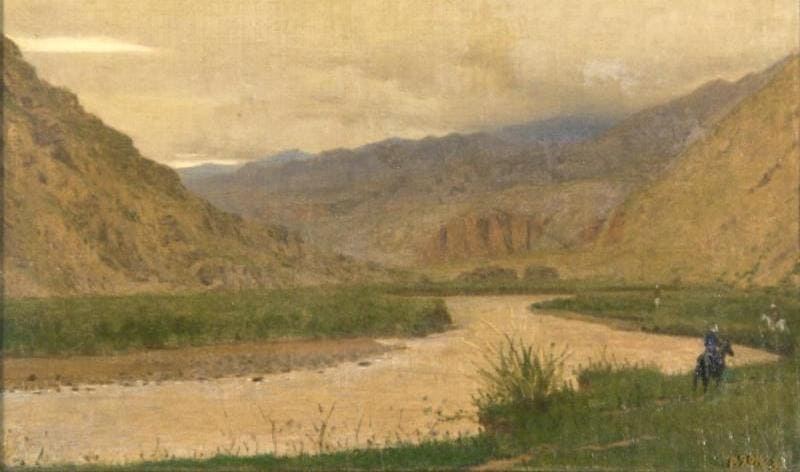
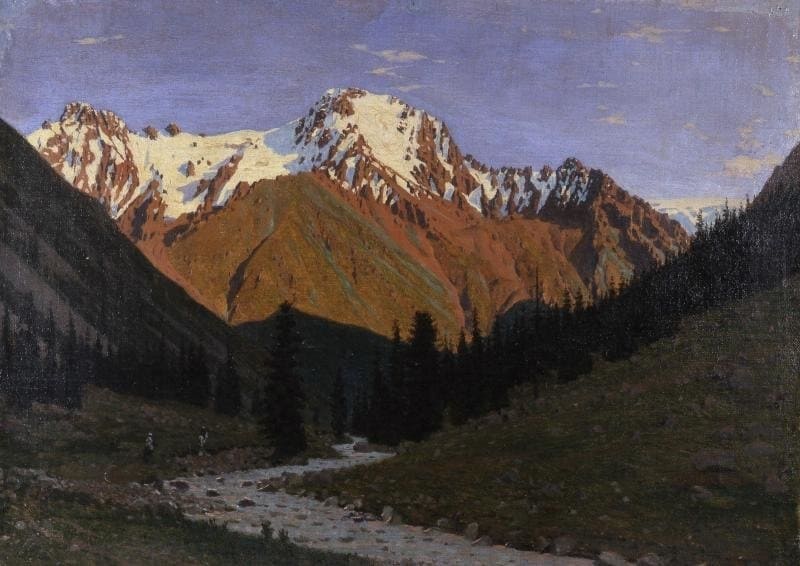
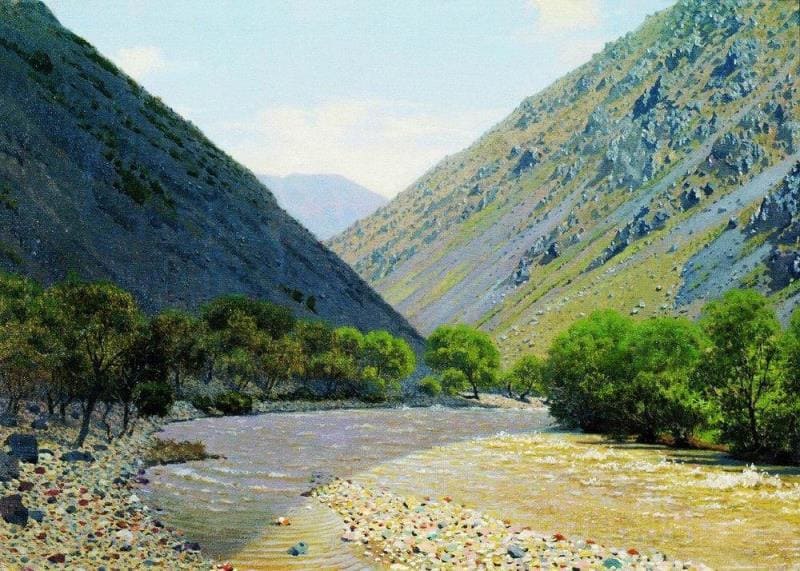
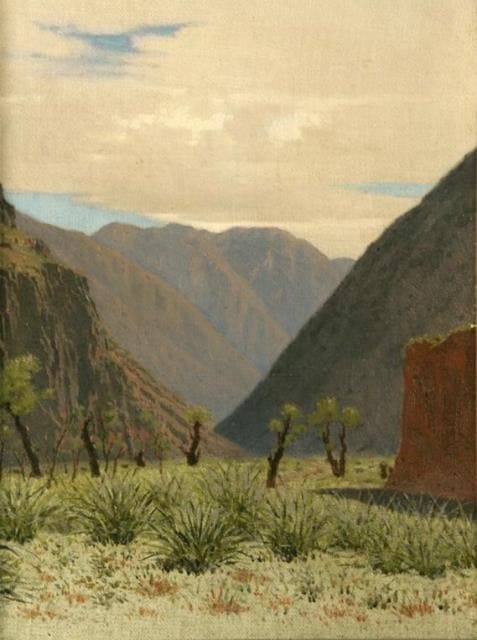
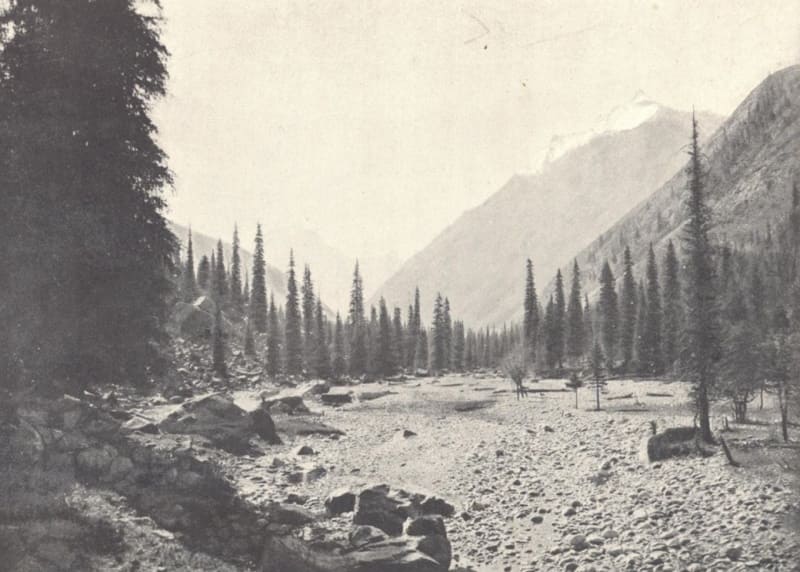
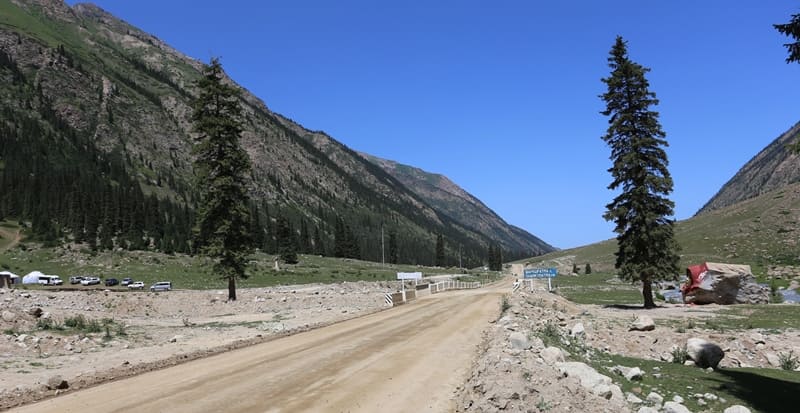
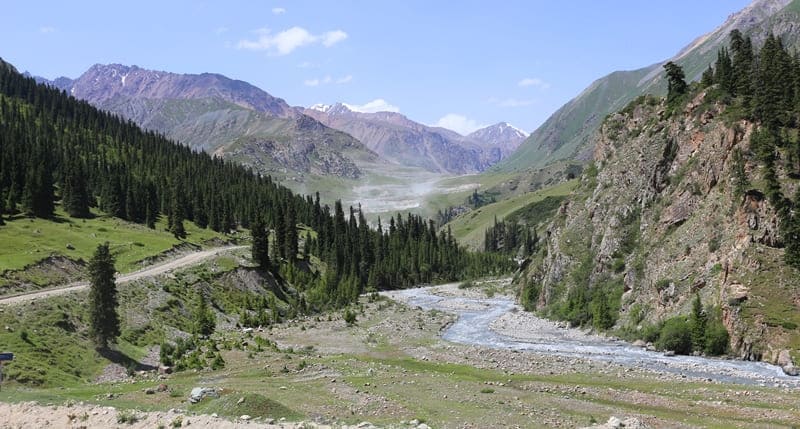
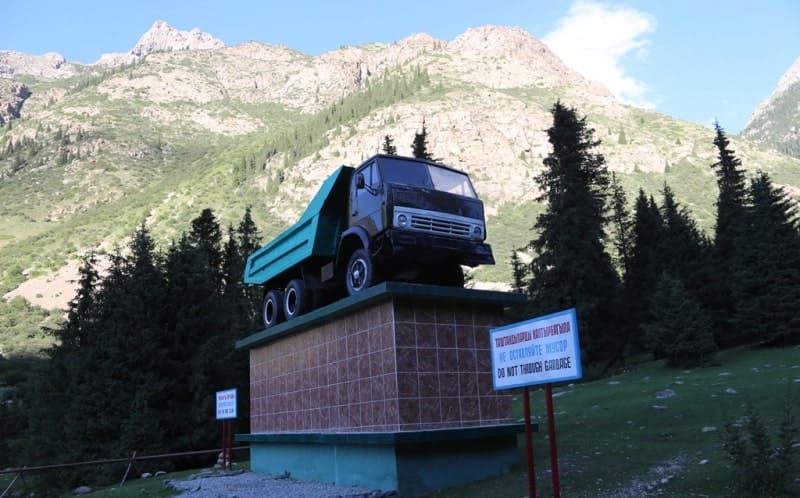

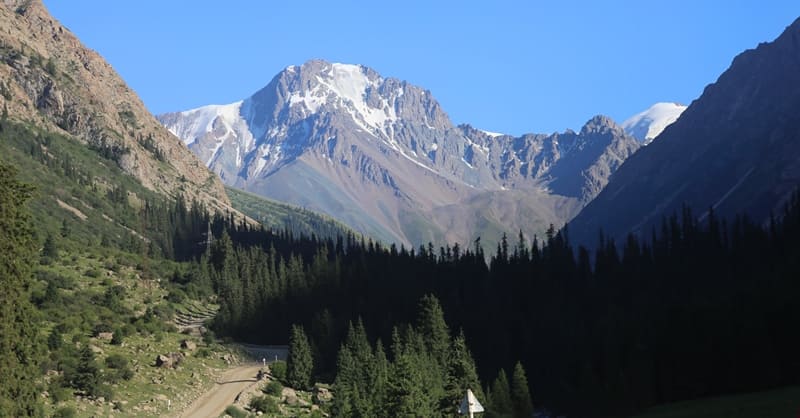
Author and photos by:
Alexander Petrov.







